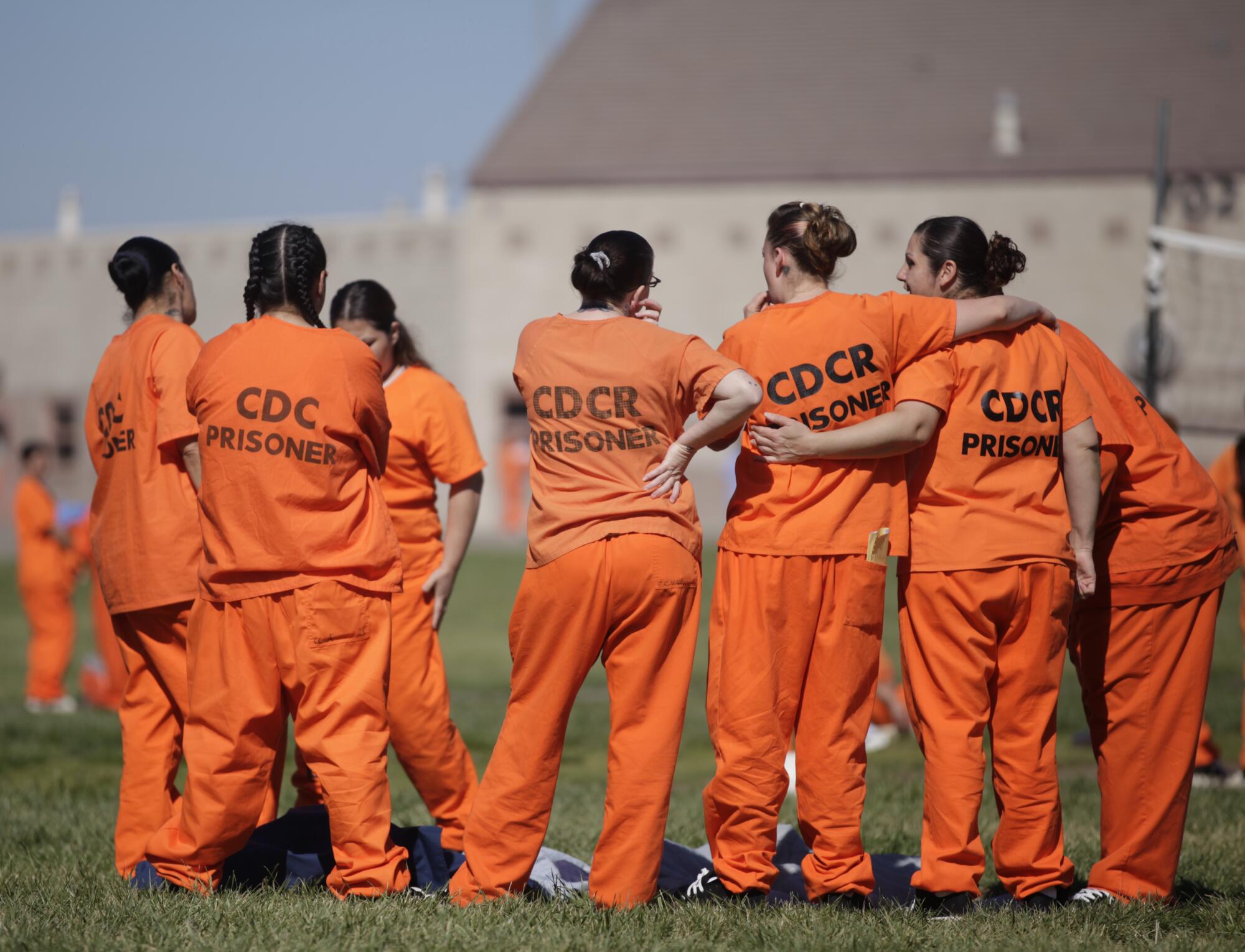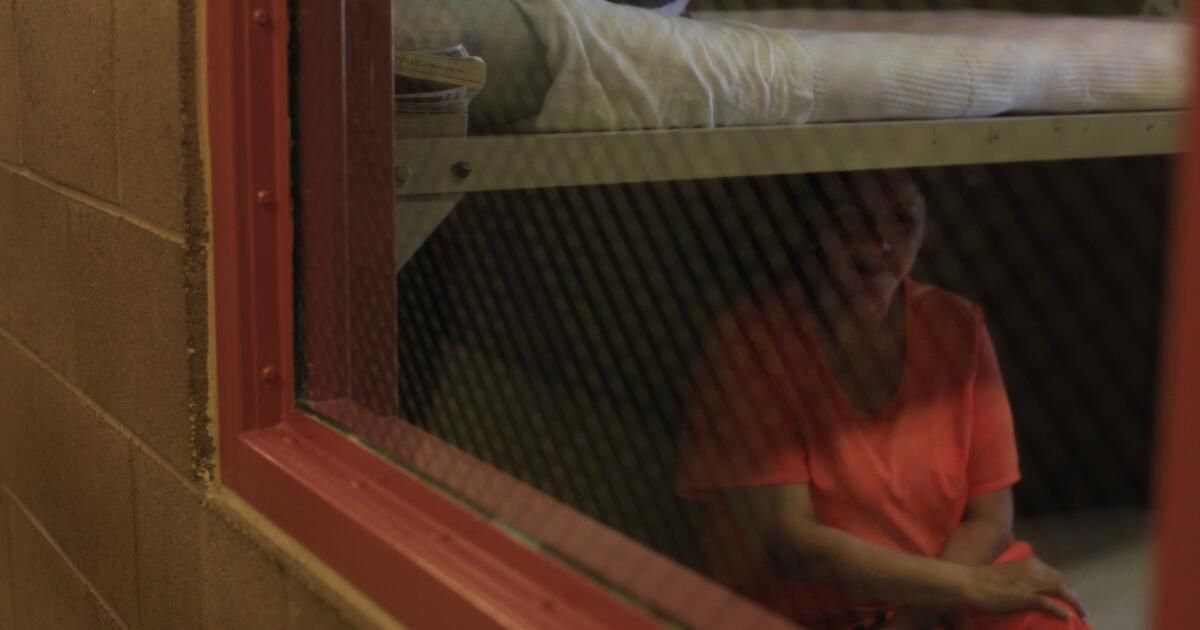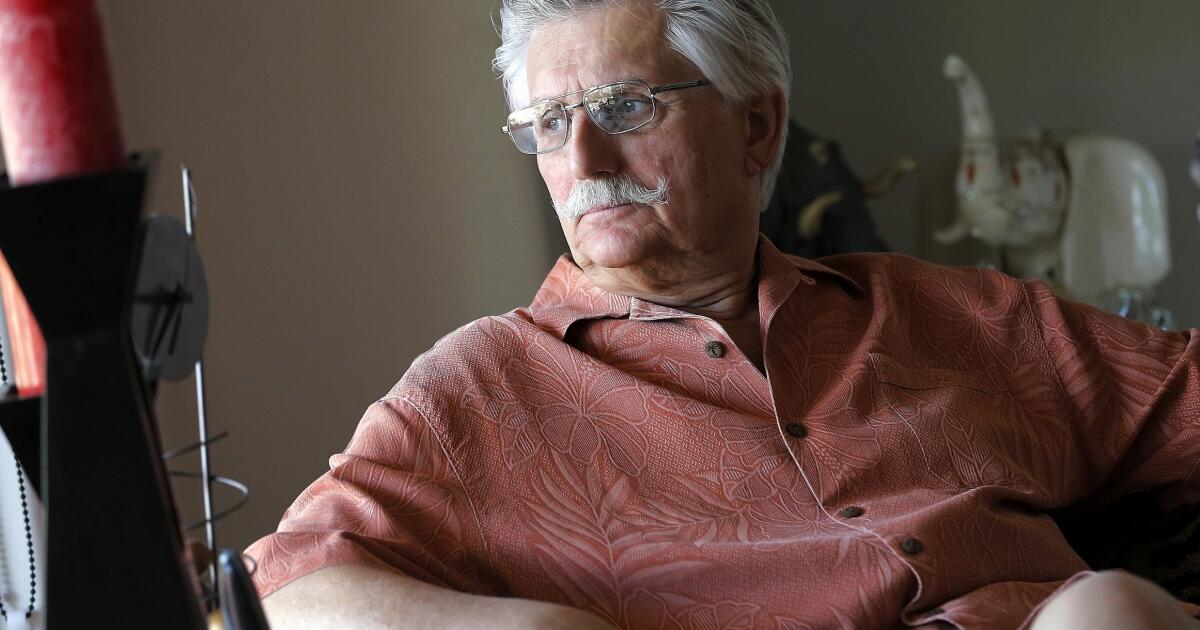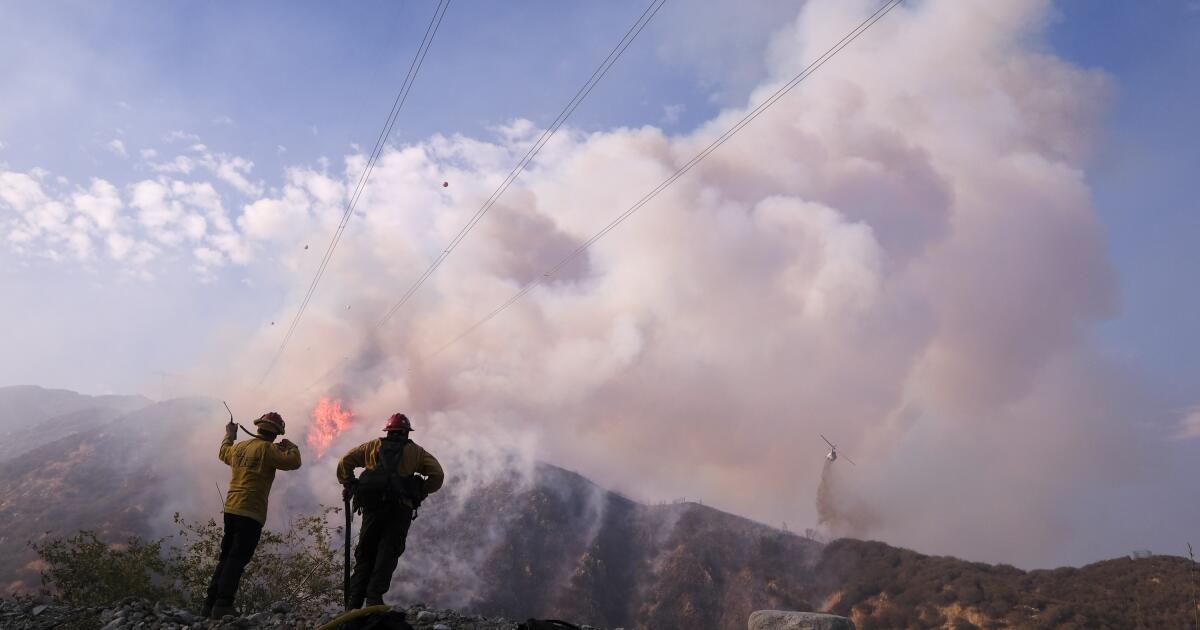The possible heat-related death of an inmate at a prison in California's Central Valley this week is focusing renewed attention on conditions inside correctional facilities as extreme heat, wildfire smoke and flooding pose increasing threats to incarcerated people.
While extreme heat endangers residents across the state, experts say California prisons are unprepared for climate change due to a variety of factors, including their remote locations, outdated infrastructure and overcrowding.
Many facilities are not equipped with central air conditioning, updated ventilation, shade structures or backup generators to power fans and other cooling devices during power outages, according to a 2023 report by the UCLA Luskin School of Public Affairs and the Ella Baker Center for Human Rights.
What's more, the state's 94,000 incarcerated people are clearly vulnerable to climate risks because they rely entirely on the California Department of Corrections and Rehabilitation for their preparedness and response.
“As these climate hazards become more common in these areas, it is important that the system has a plan or strategies in place to ensure the safety of these people,” said Guadalupe Gutierrez, one of the report’s authors. “No one can escape a forest fire, a flood or a heat wave, let alone if they are inside a prison.”
Aggressive and shocking reports on climate change, the environment, health and science.
State officials have provided few details about the person who died this week, identified as Adrienne M. Boulware, an inmate at the Central California Women's Facility in Chowchilla.
The California Coalition for Women Prisoners, an advocacy group, reported Monday that the woman lost consciousness and was unresponsive due to heat exhaustion as temperatures in the area reached 115 degrees Fahrenheit (45 degrees Celsius). However, the CDCR said the cause of her death appears to be a lingering medical condition and that she died two days after being transferred to an outside medical facility for treatment.
The agency is “closely monitoring the current heat wave and is coordinating with our state partners and leadership at each of the state’s 32 prisons to ensure adequate resources and response are in place,” said CDCR spokeswoman Mary Xjimenez. “We are paying special attention to medically vulnerable incarcerated individuals and will be providing additional water, ice, cooling areas, and information to our staff and incarcerated population on ways to prevent heat-related illness during this heat wave.”
Dangerous heat inside prisons is not uncommon.
An inmate at the California Correctional Institution in Kern County told The Times that he has been using a small fan and a damp rag to keep his body temperature down, but that the rag dries out quickly in the hot, arid air. His shower has only one knob (hot water), which provided no relief as temperatures in the Tehachapi area soared to 102 degrees this week.
“The last few days I was practically lying on a rag,” said the 32-year-old, who asked not to be identified for fear of reprisals. “I took off my socks. I took off almost everything except my underwear and I fell asleep all the time because it was so hot. I was getting very lazy, I was getting headaches and I was very thirsty.”
But Tehachapi Prison is just one of several state institutions that are ill-prepared for climate change. The report identified eight California prisons that are particularly vulnerable to extreme heat, all of them in Kern, Imperial, Riverside, Los Angeles and San Diego counties.
“Especially in the Central Valley and Southern California, they’re located in areas that are like an oven,” said Ashley Chambers, a spokeswoman for the Ella Baker Center, a nonprofit in Oakland. “And when temperatures reach 100 degrees or higher, those prison walls are not made to keep the heat out. They’re not made to keep the wildfire smoke out.”
In fact, state facilities are also susceptible to other weather hazards, such as the California Institution for Women and the California Institution for Men in San Bernardino County, which are among the most vulnerable to wildfires and their smoke. The report does not include federal prisons, county jails or other local detention centers.
California State Prison in Corcoran, Kings County, was among the most vulnerable to flooding, and came close to flooding during last year's record rains.
“The climate crisis affects us all, including those in California’s state prisons,” Chambers said.
But extreme heat remains the biggest threat. A survey of nearly 600 incarcerated people found that most respondents felt unprepared for the danger, even though more than half of them, 372 people, had experienced it, the report said.
87% of respondents said the patio they most frequently use has no shade, while 60% said they have never had access to air-conditioned rooms during extremely hot days. About half, 47%, said they have never had access to showers during heat episodes.
Respondents advocated for improvements they said would help, including infrastructure changes such as adding air conditioning, ventilation, shading and other cooling systems, as well as better staff preparation and training.
CDCR’s 2023 annual report outlines some projects aimed at addressing those concerns, including heating and ventilation improvements at several facilities. However, many of the plans have timelines of five to 10 years.
Meanwhile, daily high temperatures are already rising and are expected to continue to increase in the coming years, including an increase of up to 5.8 degrees by 2050 and 8.8 degrees by 2100, according to Gov. Gavin Newsom’s extreme heat action plan. By mid-century, heat waves resulting in public health impacts are projected to last two more weeks in the Central Valley.

Inmates stand together in a yard at the Central California Correctional Facility for Women in Chowchilla.
(Lea Suzuki / San Francisco Chronicle via Associated Press)
The CDCR Department Operations Manual also outlines some emergency protocols for wildfires and earthquakes, such as evacuations, but provides minimal information on its preparation for heat waves, floods and other disasters. It makes no mention of extreme temperatures.
However, the agency follows a statewide Heat Illness Prevention Plan, according to Xjimenez. The plan includes tailored responses based on excessive heat conditions, as well as operational changes that kick in at 90- and 95-degree temperatures, such as providing ice-filled coolers, water bottle refill stations, industrial floor fans and access to cooling areas, he said.
Despite these efforts, the survey found that 72% of inmates were not familiar with procedures to follow in the event of extreme heat. Eighty-one percent said they had never received training on safety protocols for such a hazard.
“Incarcerated people have no freedom of movement; they cannot move to a colder place,” said Abhilasha Bhola, co-author of the report. “They are completely dependent on the prison system to provide and guarantee their safety in the event of a climate emergency.”
Bhola compared CDCR’s climate response to that of the COVID-19 pandemic, which had widespread effects across the state prison system, including a high incidence of illness and death.
“This is an important way to think about what can go wrong when we are not prepared,” he said.
She and Gutierrez offered several recommendations and policy solutions, including creating more robust disaster preparedness plans and releasing some of the most vulnerable and older prisoners. Bohla noted that many inmates are over 50 years old and many have underlying health conditions, such as asthma and heart disease, that make them even more susceptible to heat.
Heat-related deaths are “completely preventable,” he said.
“The people who have decision-making power over CDCR and elected officials need to know that this is going to happen,” he said. “All the evidence, all the information, is in their hands, and it is now clearer than ever that they need to take action to protect incarcerated people and make sure that they prevent unnecessary loss of life.”
The researchers also recommended closing some of the state’s prisons, many of which are operating above capacity. Chuckawalla, one of eight prisons that has been deemed most vulnerable to extreme heat, is already scheduled to close in 2025, but they said they have not heard of any other closure plans and have not received any response to their report from CDCR after it was published.
The seven other facilities deemed most vulnerable to extreme heat are the California Correctional Institution; California City Correctional Facility; California State Prison, Centinela; Calipatria State Prison; Ironwood State Prison; California State Prison, Los Angeles County; and Richard J. Donovan Correctional Facility.
Last month, prison workers were also excluded from the California Occupational Safety and Health Administration’s new heat regulations for indoor workers, which set standards and requirements for workplaces that experience temperatures of 82 degrees or higher.
Prisons were originally covered by the plan but were excluded at the last minute due to concerns from the California Department of Finance about the cost of adhering to the rules, which officials said could be “on the order of billions of dollars.”
The fiancée of the 32-year-old inmate at the California Correctional Institution in Tehachapi, who also asked that her name not be used for fear of retaliation, said she is very concerned about his health and safety during heat waves.
He said he has tried to reach out to CDCR public information officers and ombudsmen over the years, but their responses have been unsatisfactory (often pointing to budget constraints) and little has changed.
“It’s not right,” he said. “Imagine being that hot. Imagine being in a cell. It’s terrible and they put a little fan on you and just wait for it to cool down. And he goes through that every year, everyone goes through it.”
Newsletter
Towards a more sustainable California
Receive Boiling Point, our newsletter exploring climate change, energy and the environment, and be part of the conversation – and the solution.
You may occasionally receive promotional content from the Los Angeles Times.












